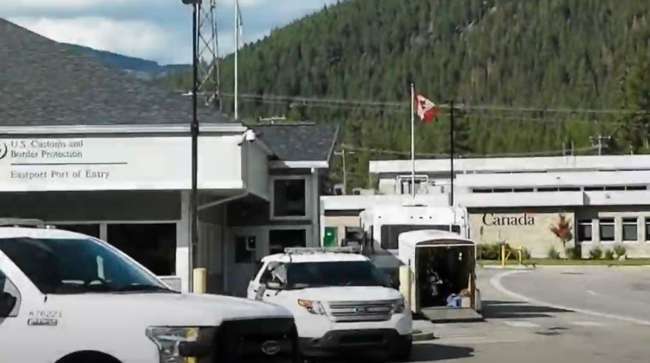Staff Reporter
Changes Possible at Four US-Canada Vehicle Crossings

[Stay on top of transportation news: Get TTNews in your inbox.]
With U.S.-Canada border traffic volumes lower than before the pandemic at three entry ports in North Dakota and one in Idaho, federal officials have temporarily extended operating hours to help it determine what to do.
For 120 days starting April 1, U.S. Customs and Border Protection expanded hours of operation from 9 a.m. to 7 p.m. at North Dakota’s Maida, Northgate and Sherwood ports of entry and from 7 a.m. to 7 p.m. at Idaho’s Porthill POE. All these locations are within CBP’s Seattle Field Office.
CBP stated that traffic volumes in North Dakota and Idaho remain approximately 39% below their 2019 levels for all types of traffic, including privately owned vehicles, trucks and pedestrian traffic.
However, steep drops in truck traffic have occurred in some of those POEs. According to Bureau of Transportation Statistics, Northgate’s truck traffic fell 63% (3,962 truck crossings) in 2022 compared with 10,718 in 2019. Sherwood also experienced a significant drop with only 3,011 truck crossings (down 48%) compared with 2019.
North Dakota has 310 miles that borders the provinces of Saskatchewan and Manitoba. Among the state’s 18 POEs, the most heavily traveled for trucks is Pembina, with 231,617 crossings last year (up 5% over 2019).
Sharing a 450-mile border with the British Columbia, Idaho has two POEs. The Eastport and Porthill locations had lower trucking volumes last year than in 2019. Porthill declined 55% with 1,744 crossings in 2022 compared with 2019, while Eastport had nearly a 1% drop with 54,619 last year.
“CBP continuously evaluates workload, staffing, operating costs and traffic volumes at all POEs to align operating hours that reflect traffic patterns and to place employees where they can be most useful. CBP’s obligation is to use its resources responsibly and efficiently to perform its mission of safeguarding our homeland,” said Jason Givens, CBP spokesperson.
Givens explained that the agency is constantly evaluating traffic levels and operational efficiency to facilitate legitimate trade and travel at ports of entry “while also exercising responsibility in an increasingly austere fiscal environment.”

Kayne Grau, CEO of Uptake, discusses ways that fleets can use data to prevent expensive truck repairs. Hear the program above and at RoadSigns.TTNews.com.
Because traffic volumes at all four northern POEs remain 39% below their 2019 levels, CBP will conduct an analysis on traffic flow at the end of 120 days, including an hourly breakdown, overall volume, and types of conveyances that crossed the border.
With a focus on determining fiscally responsible hours of operation at POEs, CBP also plans to identify potential alternate POEs, review community impacts and consider similar expanded hours at these alternate locations.
Given said, “After the temporary extension concludes, CBP will finalize its analysis and communicate next steps with all affected stakeholders and with the community. All decisions relating to hours of operation at ports of entry are data-based and are monitored for consistent fluctuations in volume and activity.”
Want more news? Listen to today's daily briefing below or go here for more info:




